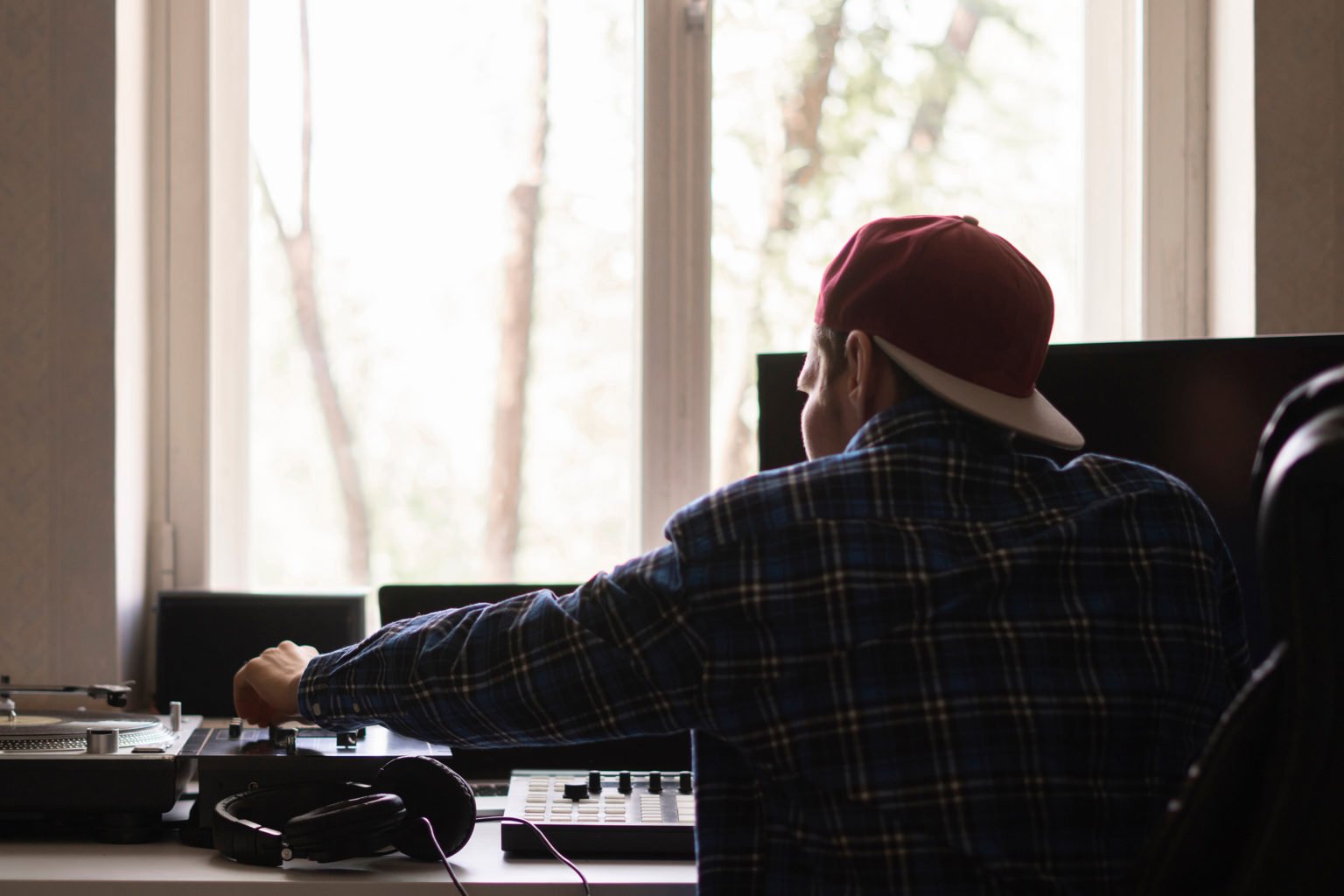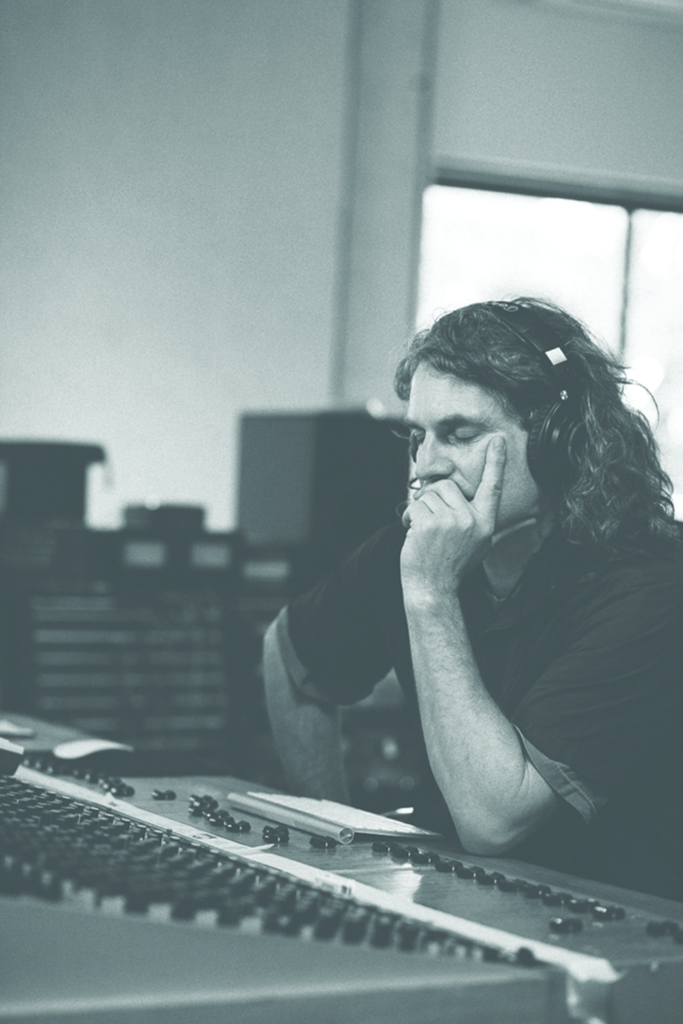News
8 Jul 2021
Listen Here: Say It Again, Sam

Subscribe to CX E-News
When you’re working alone, and no-one’s there to convince or placate, mixing is basically a simple matter of pleasing yourself. You can do what you like with the sounds in front of you, and you’re free to craft your masterpiece in uninterrupted silence. But does that produce the best outcome?
Sometimes it pays to work alone on mixes, especially at the rough end of the process when you’re first establishing a workflow, editing things here and there, and developing a basic plan of attack. Everything’s still in flux, mixing chains are still being developed and sounds are often shifting radically from one pass to another. When other individuals are exposed to that seemingly random selection of playback levels, they can often get spooked, especially if they’re inexperienced at mixing.
I would wager there’s hardly an engineer amongst us that hasn’t had to turn to others in the room early on in a mix and explain why something sounds the way it does. It’s pretty frustrating at times for an engineer, having to explain a thought process early on in proceedings. There are literally thousands of ideas being internalised during a mix, and decisions and judgements being made around every single one of them. If you had to provide a running commentary explaining your rationale behind every course of action, you’d be working on the same song for weeks!
For many engineers, this sort of disruption to their workflow and creativity is actually a deal-breaker. Some have chosen to draw a line in the sand because of it, instigating an ‘I mix alone’ policy. Others retreat to the hills (like me), where there’s less capacity for others to just ‘pop in’ to the mix session unannounced. A third group just live with the interruptions day to day, turning into a grumpy old bastard along the way. The rest choose another occupation or eventually wind up with no clients.
Communicate Your Intentions
But you can’t always get what you want, as someone once said. Life is full of surprises.
Let’s say, you’re an ‘I mix alone!’ kind of girl or guy. And by way of example, let’s say you’ve been producing a record for months now with a solo artist called Fred Nerk. Fred is well aware by now that you don’t like being interrupted all that much during the early part of a mix. You talked about that months ago, well before you pressed ‘record’ and now it’s day four of the mixing sessions.
You’re working pretty much in silence apart from a bit of random chit-chat with Fred, but Fred is sensitive to your needs and he’s happily sitting on the couch reading a book, respectfully popping out occasionally to take a phone call.
Suddenly, five people turn up unannounced to the studio, three of them are Fred’s friends (Tom, Dick and Larry); two others are their work mates who don’t know Fred and haven’t been in a studio before. They breeze right past the ‘I Mix Alone!’ policy hung in the foyer like a gold record, and announce their arrival like it’s party time. Everyone’s carrying snacks and drinks, and already the two mates are marvelling at all the gear and twinkly lights. One of them is on a video chat, filming their grand entrance live to an unknown third party, and the focus and tranquillity shatter simultaneously.
Sound familiar?
This sort of thing happens in studios all the time – always has. Surely by now no-one in this industry expects their working environment to function as silently or strictly as the State Library? Fun does still play a pivotal role in studios, let’s not forget… unless, as the engineer in this scenario, you have finally shrivelled like a prune and lost all memory of why you got involved in this caper.
But wait, and getting back to our example… there’s more!
Back in the control room, everyone makes themselves a little too comfortable, and both you and Fred are too taken aback and confused by what has transpired to react in an assertive manner. Polite conversation ensues.
Eventually, chitchat about how cool studios are is pushed aside by requests to hear what Fred’s new album sounds like…
‘Can we hear some of it, guys?’
Next thing you know you’re playing a rough mix to the group, using your highly developed body language skills to encourage them to listen in silence (one of the many things you learned during your audio engineering course was that up to 93% of all human communication is non-verbal… oh, you didn’t?)
When you hit stop, somewhat unbelievably, instead of polite congratulations, unsolicited opinions start to fill the air, slowly at first but then with more vigour and attitude. Worse, most of this seems to be coming from the two mates of the mates. In your head, you’re screaming out: “Who the f**k are these guys? They’re not even supposed to be here!”
This is where the true art of professional mixing lies… in remaining calm under pressure and using respectful communication and diplomacy… always. Mixing has far less to do with attack and release settings than many people might think!
You Can’t, But Should You?
The more difficult side of the mixing coin is by far the one where several opinions, tastes and perspectives are constantly being accommodated. Getting a mix over the line that everyone loves – and by ‘everyone’ I mean the singer, the manager, the bass player, the bass player’s girlfriend, the drummer, the record company executive, and her tradie husband who used to be in a band – is exceedingly difficult. It’s not much fun either.
But mixing on your own, without clients (or anyone else) present, has its shortcomings too, and for several reasons. In the same way as a sportsperson needs a coach to push them that little bit harder, so too a mix engineer can almost always benefit from the pressure a client can apply to a mix. There are all kinds of permutations to this relationship, of course, but the principle nevertheless holds true.
Provided there are healthy levels of communication and respect flowing between the mix engineer and the client (or clients), there is no reason why the mix can’t substantially benefit from another informed, invested opinion. I specifically use these last two adjectives here, because it’s important that the mix be debated amongst people directly involved in the music, not an uninvited guest, or guests. Sometimes these stray individuals will accidentally provide some fresh-eared insight, but more often than not their input only tends to sow doubt in the mind of the client, and when that happens there’s no upside.
The Mix Correspondent
In my estimation, the best mixes are made somewhere in the large grey area between solitary mixing and the clichéd ’80s notion of mixing while a party cavorts around you. But unfortunately, in 2021, mixing has become a predominantly clientless exercise now anyway. Global circumstances have seen to that.
For my part, I’m always eager to have clients here at The Mill for at least some of the mixing I do, for all the reasons I’ve just outlined, but even that’s becoming a rarity now. The modern method seems to be: mix alone, send mix files out the door via digital carrier pigeon, email the clients a precis of what’s been done and where I think the mix is at, and wait for a response.
Sometimes this method is quite effective, but more often than not, it ironically opens the door to a giant raft of correspondence between individuals who are either more – or mostly less – capable of expressing themselves via the written word, which can create confusion, disagreement, and ultimately mixing malaise.
So clumsy is the group email exchange at times that you could be forgiven for thinking that we’d all be better off back in the analogue domain where the mix ended with everyone present, you printed it to tape or DAT and lived with the consequences.
In many ways, this whole approach to mixing via correspondence has become a slow, somewhat unsatisfying one. Moreover, it potentially lacks a couple of crucial ingredients that make a mix great. You never stop hearing about the concept of tracking a good band live in the studio, and what’s intangibly missing if those same individuals played one part at a time as a bunch of overdubs. So it is with mixing. It’s hard to put your finger on exactly what’s absent… but something is.
The downside of the world we currently inhabit is that most mix engineers now need a university degree majoring in English (which, fortuitously, I have!) to communicate effectively with their clients. The upside is that when you go back into the studio, all the queries about the mix are there in black and white, for you to address one at a time like a shopping list.
My advice about good ol’ 2021 is this: don’t let it turn you into a ‘mix alone’ engineer. Do your damnedest to communicate with everyone else who has a vested interest in the project, even if it seems unwieldy and slower than a traffic jam. The mix will always benefit from their input.
Good luck.

Andy Stewart owns and operates The Mill studio in Victoria, a world-class production, mixing and mastering facility. He’s happy to respond to any pleas for pro audio help… contact him at:
andy@themillstudio.com.au or visit:
www.themillstudio.com.au
Subscribe
Published monthly since 1991, our famous AV industry magazine is free for download or pay for print. Subscribers also receive CX News, our free weekly email with the latest industry news and jobs.




